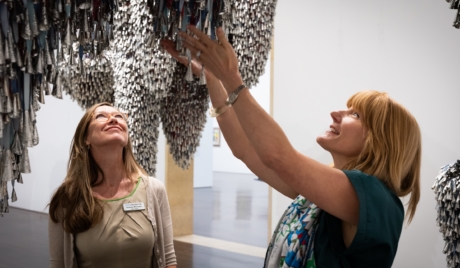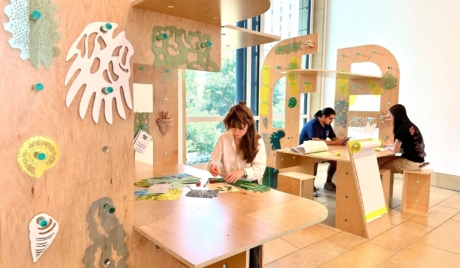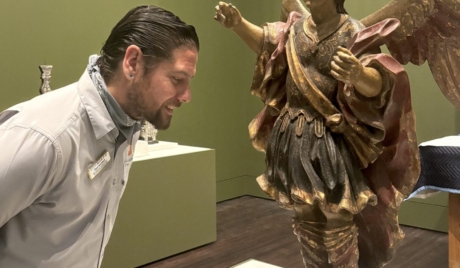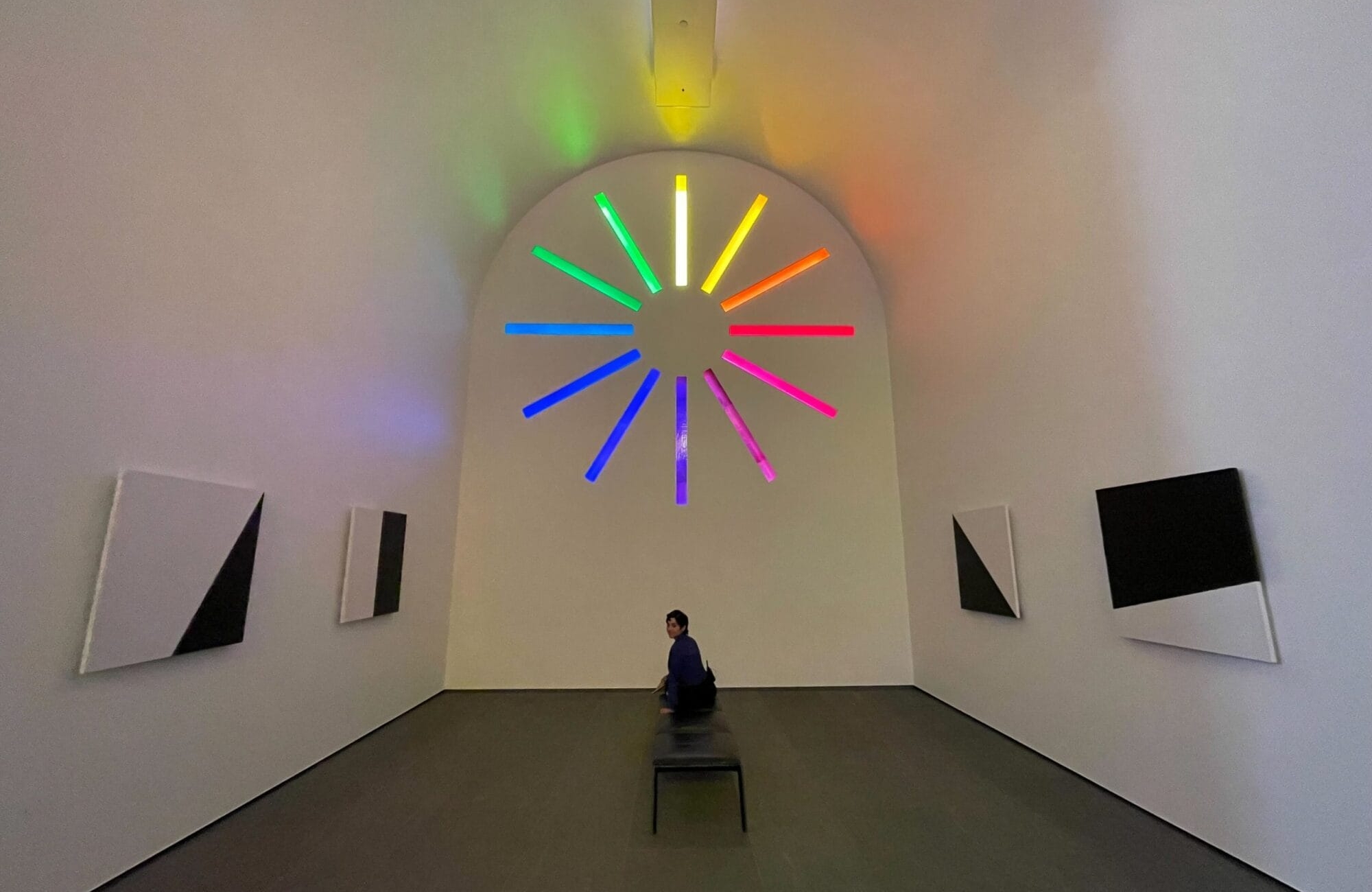
Celebrating Pride: Perspectives on Art
Pride Month is nationally recognized in June, but did you know that in Austin, it’s officially celebrated in August? In recognition of Austin Pride Week jubilations, we invited members of our Security Team (aka the Guardians of the Galleries) to talk about works of art that resonate with them. These perspectives share personal interactions with artworks in our galleries, and we hope they encourage you to explore in person. Share your perspectives on social media by tagging us @blantonmuseum
Austin by Ellsworth Kelly
By Kalia Aquino
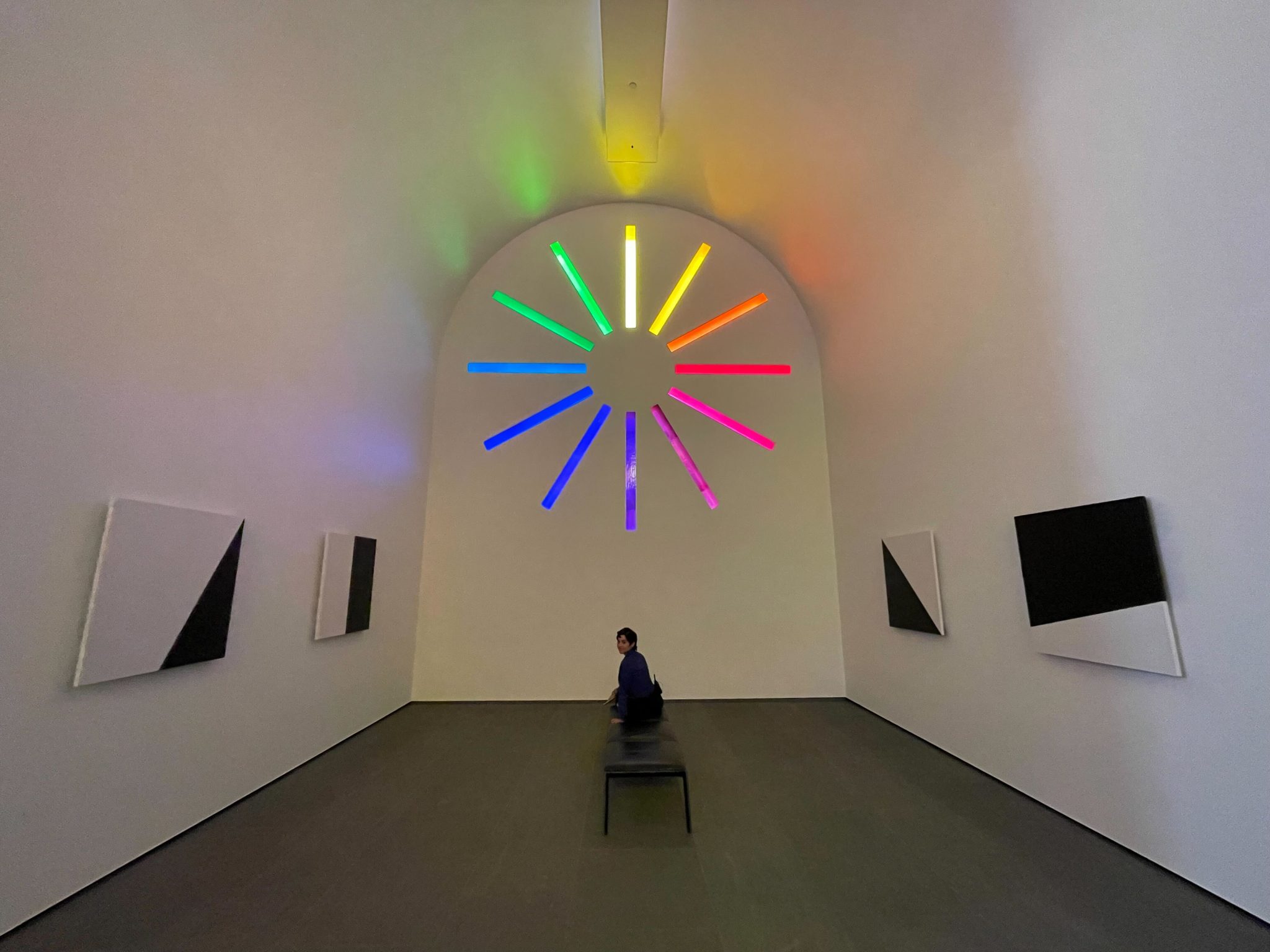
A daily moment of queer empowerment for me is the safe haven that is Ellsworth Kelly’s Austin. Not for its infamous rays of rainbow peaking through the hand blown stained glass, however awe-inspiring. Kelly (b.1923) began the conception of Austin as early as 1986, it wasn’t until December 18th, 2015 that Kelly received word that the construction of Austin would begin. It was nine days later that Kelly died. He was a beacon of inspiration for other queer artists in the past like Robert Indiana, and I’m sure plenty more, but Kelly’s light shines further into time. I am continuously awakened by the Kelly building. As a Gallery Assistant, I will spend an average of 5 hours per week inside Austin. I’m empowered to know that I can safely exist within a space that serves as a daily reminder that through mindfulness, intuition, persistence, and the freedom of expressing truth through creative means, anyone’s dream can be realized. Kelly and his partner Jack Shear, were together for 32 years. Thank you to Ellsworth Kelly and Jack Shear, for they serve as a reminder along with the building itself, that (all) love transcends all things.
Dying Gaul and Portrait of a Gentleman
By Daniel Ymbong
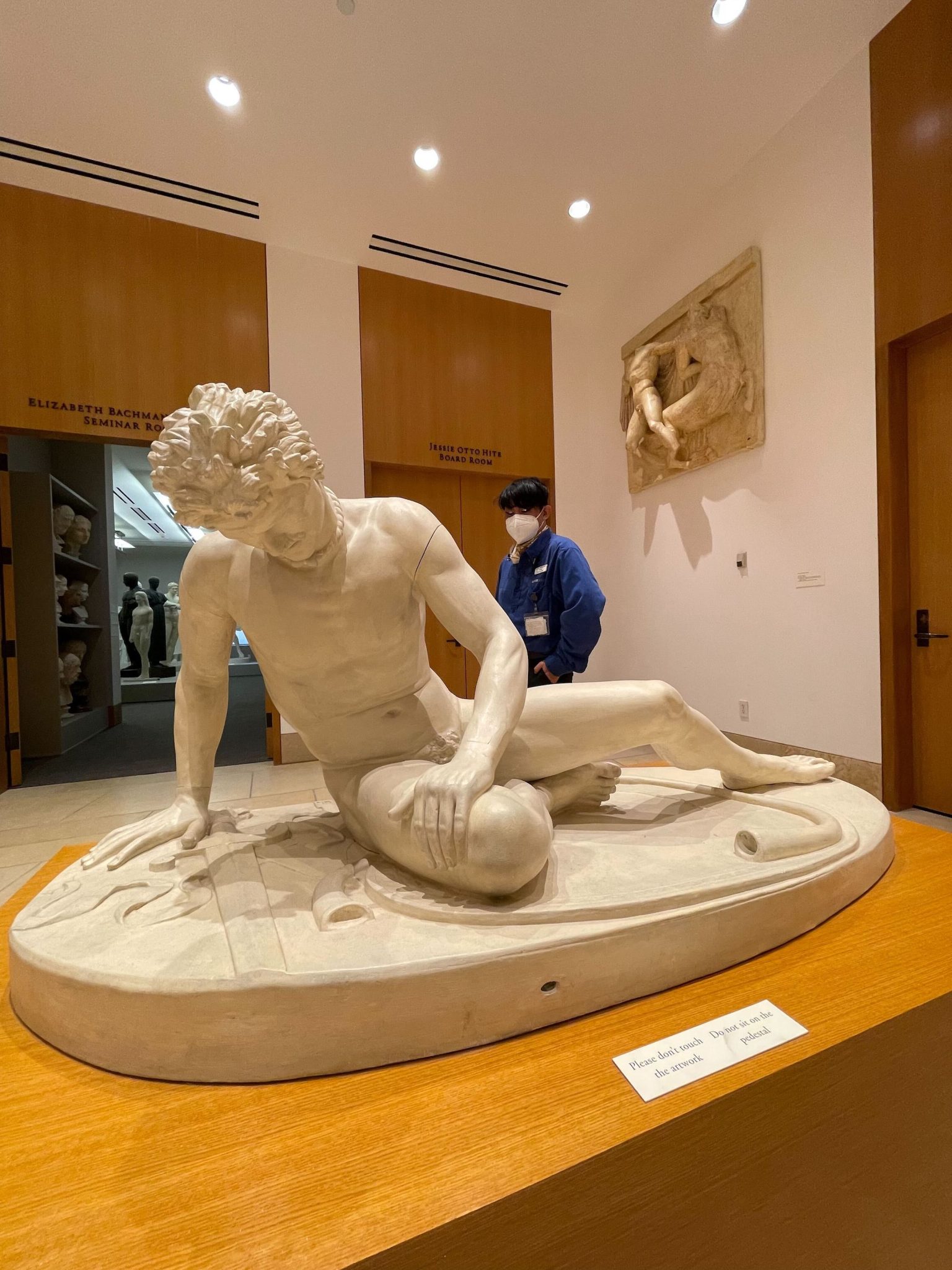
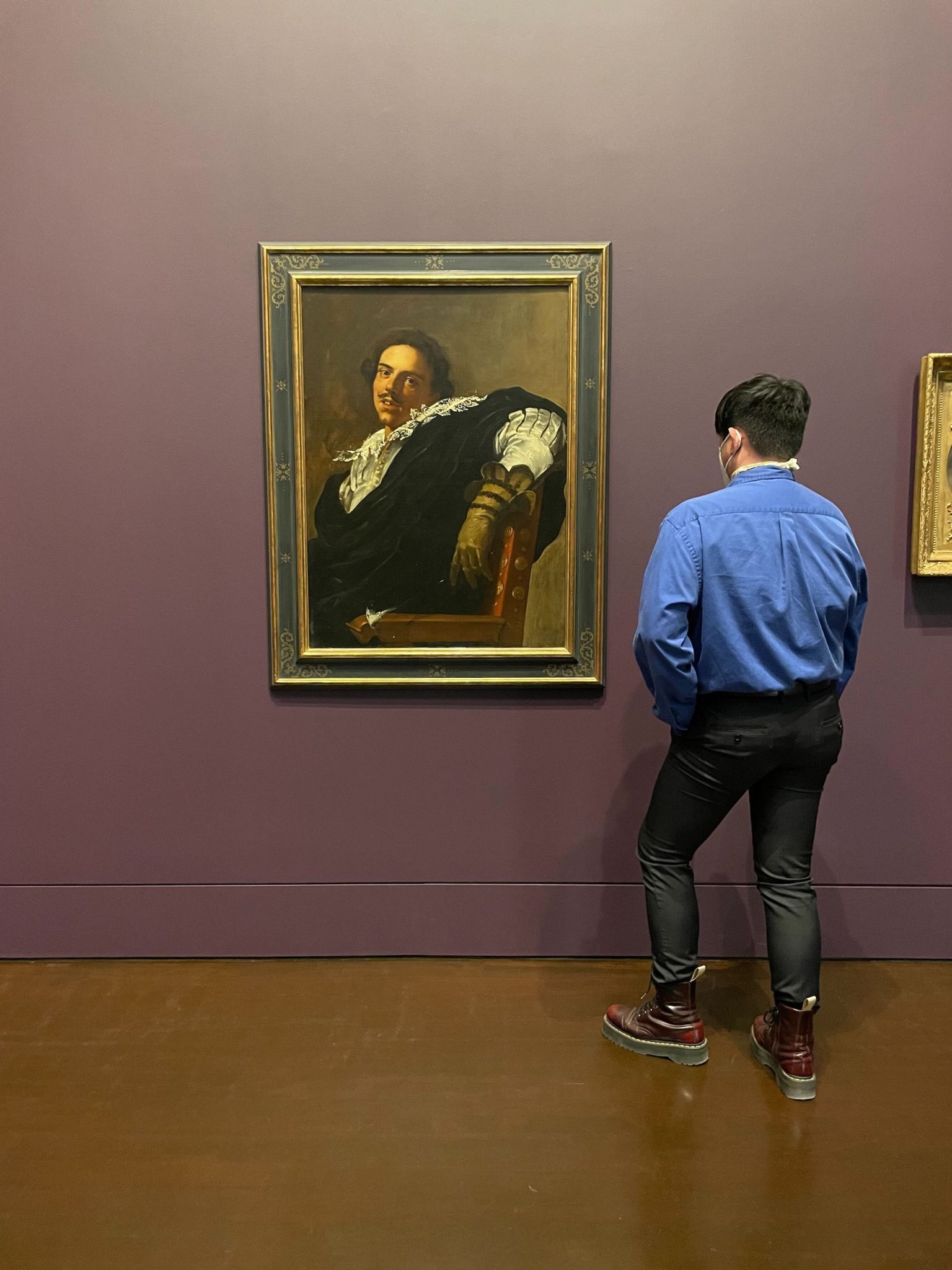
As a Filipino gay man whose academic training and interests are the fashion arts, I couldn’t help but gravitate towards the plaster cast Dying Gaul and Simon Vouet’s “Portrait of a Gentleman.” Both pieces embody and immortalize the classical vision of European male athletic youth beauty. The “Dying Gaul” romantically captures a reclining nude, on the brink of death and pain, which appears so elegant and sensuous. Vouet’s intimate painting highlights fashion, humor, wealth, and indulgence, as shown by the sitter’s sumptuous dress: a lace ruff collar, leather gloves, and a silk blouson. He casually holds a goblet faced down, and stares at the viewer in a drunken inviting haze, missing tooth on full display. These artworks showcase the fashionable mustached man, a recurring trend salient in the queer, art, fashion, and musical subcultures. Mustached men remind me of Tom of Finland’s muscled police officers, singers Brooks Nielsen of The Growlers, Chris Stewart of Black Marble, and José Rizal, the Philippine National hero literati.
Patient by Frank Moore
By Sydney Smith
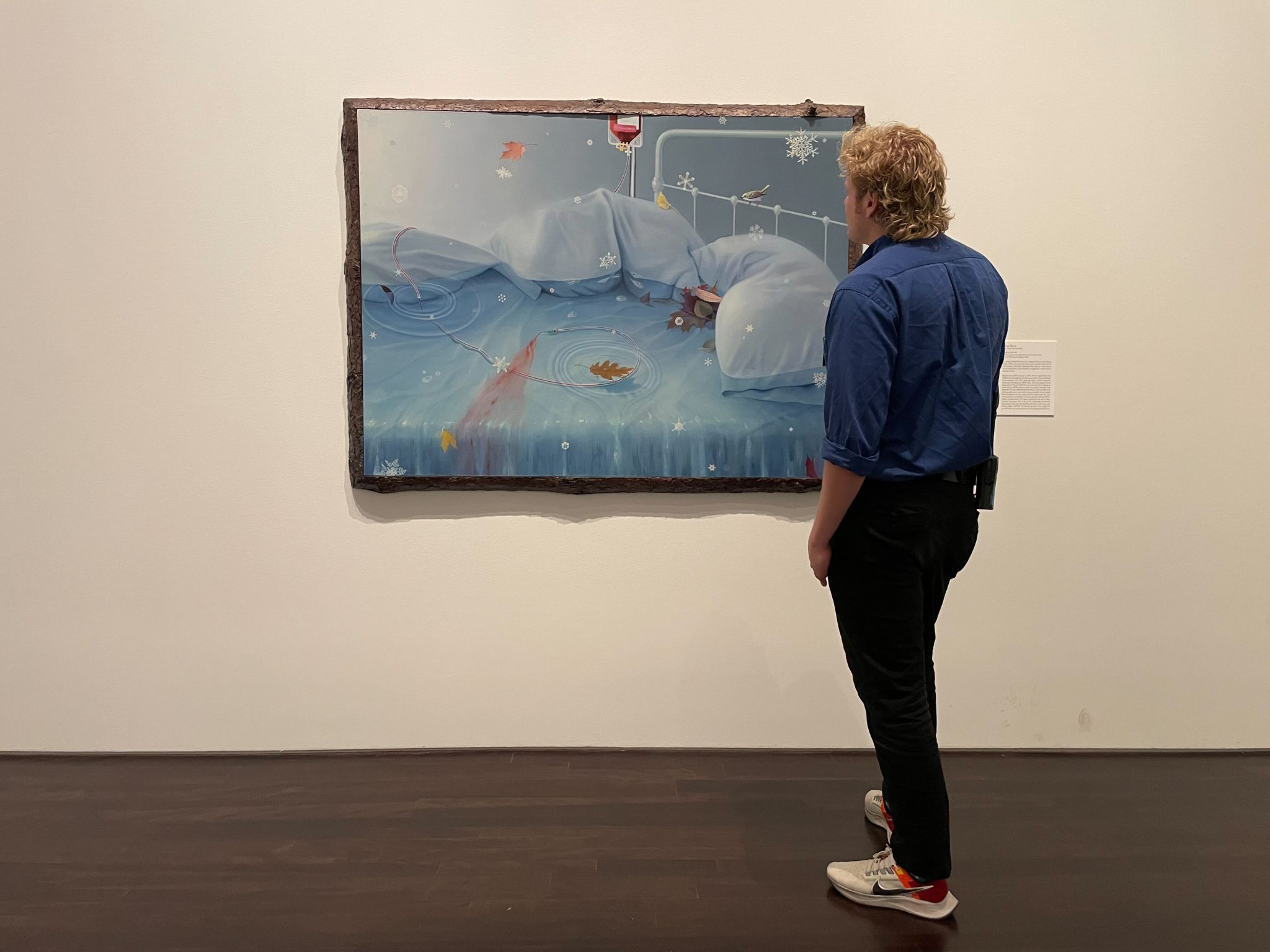
“If you have a talent you want that talent to bring light into the world.” Artist Frank Moore was an AIDS activist during the 1980s, helping create the red ribbon for HIV awareness. Because of this, most of his paintings deal with loss such as the empty hospital bed in Patient. Frank eventually passed away from AIDS at 48, but his paintings still bring hope and comfort to others that have lost a loved one. Like many other people, I’ve experienced losing a loved one, sometimes it’s abrupt and sometimes it’s a gradual hospice, like in Frank Moore’s Patient. All grief is gradual though. I feel as if time stands still when looking at this painting. As if the bed waterfall is slowly icing over. I feel as though it is realistic and surreal in style because loss feels very real but also very surreal at times, it can really mess with your mind. I find comfort in it, in probably the same way Frank Moore found comfort in nature, and am joyful that he included nature in his work. I find comfort in that little bird perched on the bed frame. It is as if Moore is saying, “…life goes on, but I am still here if you look hard enough.”

